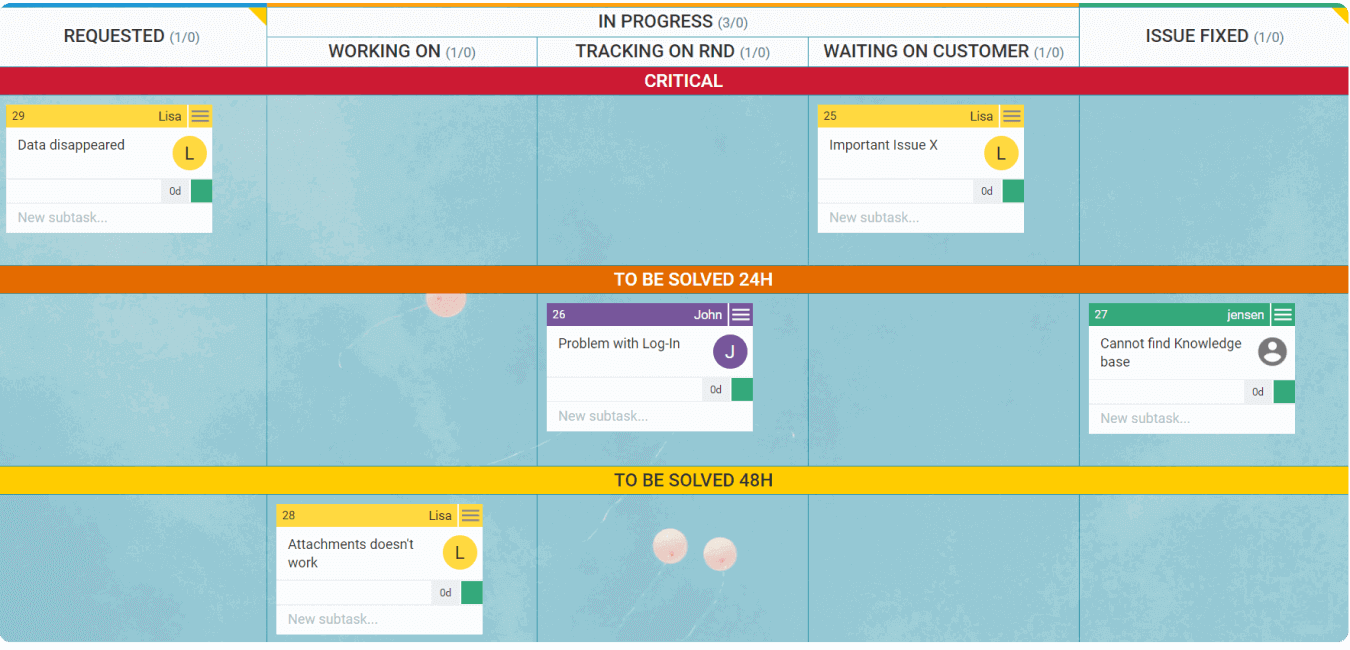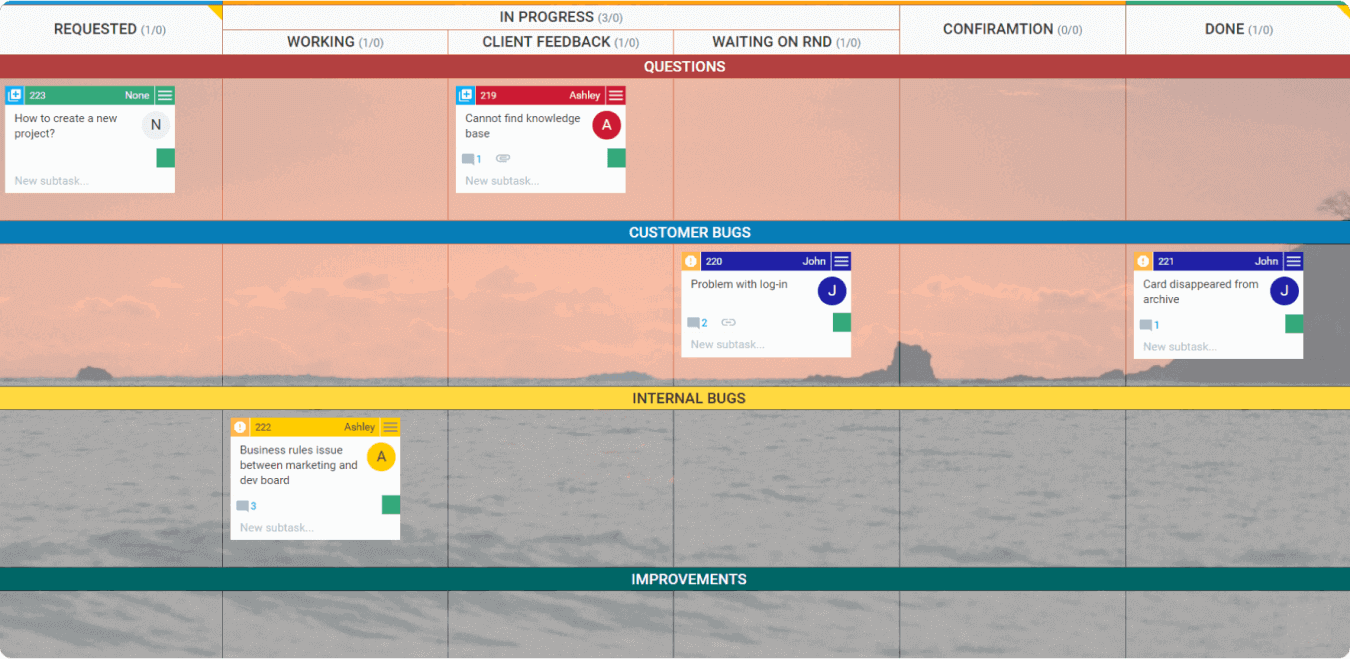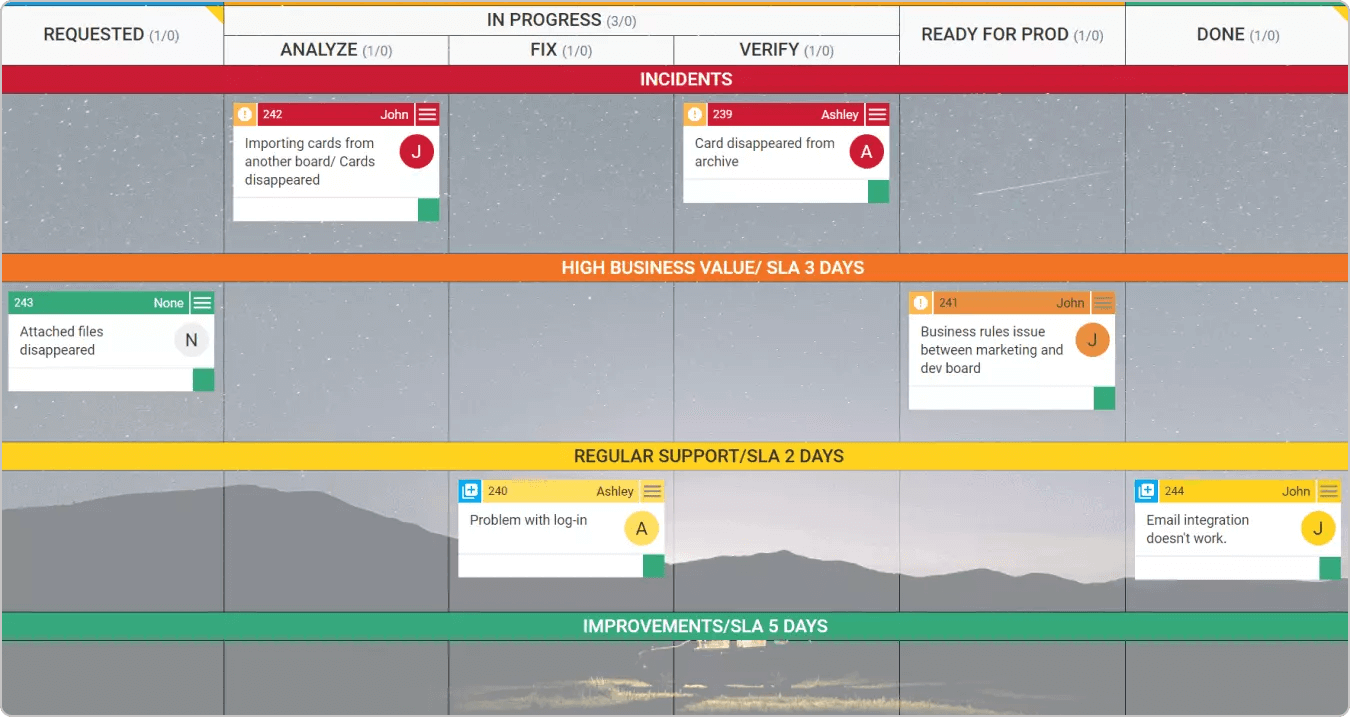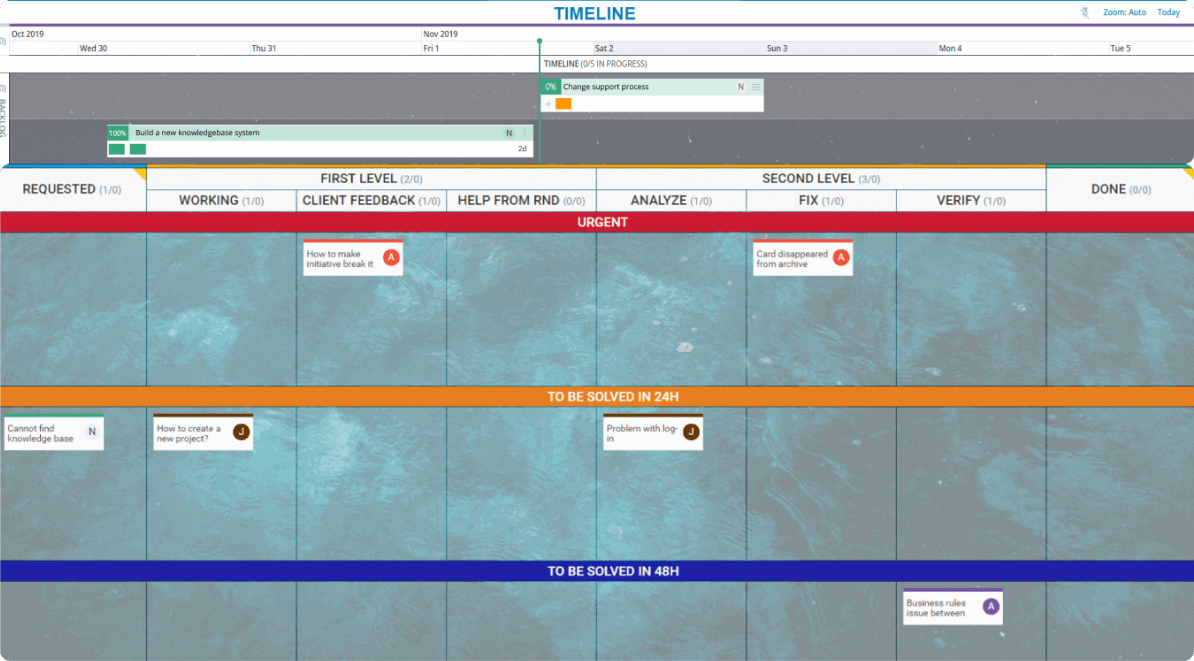One of the first applications of the Kanban method in the IT industry was with support teams.
The reason is clear - such teams need to be extremely flexible due to the unpredictable arrival of work, they need to be able to determine priorities quickly and they must strictly track how much time each item takes to complete.
The Kanban method has been tried out in the support domain with amazing results, and a lot of teams nowadays consider it as the de facto standard to address change requests or defects.
Below is a sample implementation of a Kanban project for support teams that you can implement yourself or enhance as required.
Support Kanban Board Structures
 Support is a business function that may be structured in many different ways depending on the size of a company, its complexity, and so on. This way, in the following paragraphs, I tried to highlight some of the most popular scenarios of Kanban boards for production support teams.
Support is a business function that may be structured in many different ways depending on the size of a company, its complexity, and so on. This way, in the following paragraphs, I tried to highlight some of the most popular scenarios of Kanban boards for production support teams.
Enjoy!
First Level of Support Board

Usually, support teams are divided into the first and second level of support. The first level of support is in charge of fixing regular user's issues.
In many cases, users can be external and internal users. So it is a good idea to use swimlanes in order to separate internal support cards/tickets from external ones.
In such situations, some typical process stages may be implemented as Client Feedback, Waiting on RND, or any other stage applicable to a specific team needs.
Second Level of Support

This is a more in-depth level of support where the teammates are highly skilled and have extensive knowledge of a given service (product), for example. Thus tasks may be of high business importance.
This is why swimlanes may be applied to differentiate regular support tickets from high business value tasks, as shown in the image above.
Of course, you can always apply an Incidents/Expedite lane where only urgent tasks appear.
Combined Support Board

On many occasions, production support teams prefer to work on a single board in order to acquire a better understanding of the whole process.
On the board above you can see a combination of the previous two examples. As you may notice the swimlanes may be used for work prioritization and time management.
This board can help the different lines of support to collaborate in a better way and keep control of all customer issues, no matter their complexity status. These are just a few templates a support team can use. Basically, each team can build its Kanban board based on its own preferences.
Why Do Support Teams Need Kanban?
Support teams need Kanban because it offers a comprehensive solution to the challenges of managing growing customer bases and complex support tasks.
Initially, many teams rely on makeshift solutions like shared email accounts, leading to inconsistent communication and a lack of tracking for issue resolution metrics. This approach fails to generate data for identifying recurring issues or integrating with other teams effectively.
Investing in purpose-built help desk tools is a step up, but they often operate in isolation from other departments, hindering collaboration and communication. Kanban, however, bridges support and product teams, allowing seamless integration and communication.
It enables teams to track, resolve, and analyze tickets while fostering collaboration with external teams. With Kanban, support teams can identify recurring issues, prioritize tickets efficiently, and contribute valuable insights to product strategy.
Here Is How Kanban Helps Support Teams:
- Organize and Manage a Great Amount of Work: Kanban provides a structured framework for organizing and managing the influx of support requests, ensuring that no task gets overlooked or neglected amidst the volume of incoming issues. By visualizing the workflow and establishing clear priorities, Kanban helps support teams allocate resources efficiently and handle workloads effectively.
- Keep Track of Every Support Issue: With Kanban, support teams can track every support issue from the moment it is logged until resolution. Each ticket is represented as a card on the Kanban board, allowing team members to monitor its progress, identify bottlenecks, and ensure timely resolution. By maintaining a transparent and accessible record of all support activities, Kanban facilitates accountability and fosters continuous improvement.
- Acquire a Better Understanding of the Work Process: By visualizing the workflow and mapping out each step of the support process, Kanban enables support teams to gain valuable insights into how work flows through their system. This enhanced visibility allows team members to identify inefficiencies, streamline workflows, and implement improvements that enhance overall productivity and customer satisfaction. Through data-driven analysis and regular retrospectives, Kanban empowers support teams to refine their processes and adapt to evolving needs iteratively.
- Shorten Cycle Times for Solving Customers' Issues: By promoting continuous flow and reducing waste, Kanban helps support teams shorten cycle times for solving customer issues. By visualizing work in progress and limiting the number of tasks in each stage of the workflow, Kanban minimizes delays and enables support teams to respond to customer inquiries more quickly and efficiently. This accelerated pace not only improves customer satisfaction but also enables support teams to handle a higher volume of requests with greater agility and responsiveness.

Pavel Naydenov
Marketing Professional | Kanban & PPM Ops Certified
Pavel is a natural-born optimist with 10+ years of experience in the marketing field. By leveraging Kanban, Lean, and Agile practices for years, he drives brand growth and engagement through data-driven marketing strategies. He believes every message should express the fundamental values of a brand, and if delivered positively, it can change the course of its existence.



